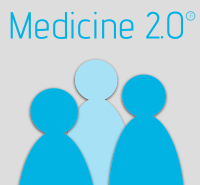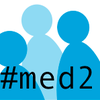Designing a Blended Learning Tutorial for Undergraduate Medical Education Supported by the Use of IPads
|
If you are the presenter of this abstract (or if you cite this abstract in a talk or on a poster), please show the QR code in your slide or poster (QR code contains this URL). |
Abstract
This paper aims to present the process followed in the design of a Blended Learning tutorial in the area of Respiratory Medicine applying BLEnDT© in preparation for the implementation of the Medical Mobile Strategy at the School of Medicine Imperial College London.
Methodology
The sample analysed included 283 full-time Year 1 undergraduate medical students of average age 19 years.
According to the learning outcomes, BLEnDT© suggested the design of an interactive e-module which was delivered via Blackboard before the session. The Respiratory Tutorial was delivered in 10 different sessions (25 students per session). At the tutorial, the students completed a Pre Quiz covering the content delivered in the e-module, participated in the session supported by the NearPod App using the iPads provided for the session and finally completed a Post Quiz and a survey covering the content delivered during the tutorial.
Results
114 students completed the e-module before the practical (Male= 66 Female= 48), obtaining an average score of 75% in the Pre Quiz and 61% in the Post Quiz. 161 students did not complete the e-module before the practical obtaining an average score of 61% in the Pre Quiz and 51% in the Post Quiz.
According to the statistical analysis, after taking into account the Pre Quiz scores and the completion of the e-module on Blackboard there is marginal evidence of an increase in the final respiratory mark, as the Post Quiz scores increases.
197 students (Male=121 Female= 76) completed the survey ‘My learning experience after the interactive session using iPads’ (Bonnanno and Kommers, 2008).
On average, the students expressed a positive attitude (4/5) under the affective component showing confidence about the use of the iPads and a border line attitude under the perceived usefulness component (3/5) with particularly low scores under (Question 13: ‘most things that one can get from learning using iPads can be obtained or arrive at through other means’).
The students expressed a positive attitude (4/5) under the perceived control component showing confidence about the use of the iPads and finally the students expressed a positive attitude (4/5) showing willingness to use iPads for learning in the classroom.
Conclusion
There is evidence that the approach taken in the design of the blended learning program using BLEnDT© has had a positive influence on the learning experience.
In general, students feel confident about tablet technology and the use of iPads. However, the students in this study did not express a particularly positive attitude towards the use of iPads for collaborative learning in the classroom. The general feedback received from the students on the survey highlights their willingness to use iPads as a personal learning tool. These findings lead us to the conclusion that the implementation of iPads in teaching and learning should be part of a holistic approach incorporating all the aspects of the teaching and learning experience that may benefit from the use of mobile technology.
Methodology
The sample analysed included 283 full-time Year 1 undergraduate medical students of average age 19 years.
According to the learning outcomes, BLEnDT© suggested the design of an interactive e-module which was delivered via Blackboard before the session. The Respiratory Tutorial was delivered in 10 different sessions (25 students per session). At the tutorial, the students completed a Pre Quiz covering the content delivered in the e-module, participated in the session supported by the NearPod App using the iPads provided for the session and finally completed a Post Quiz and a survey covering the content delivered during the tutorial.
Results
114 students completed the e-module before the practical (Male= 66 Female= 48), obtaining an average score of 75% in the Pre Quiz and 61% in the Post Quiz. 161 students did not complete the e-module before the practical obtaining an average score of 61% in the Pre Quiz and 51% in the Post Quiz.
According to the statistical analysis, after taking into account the Pre Quiz scores and the completion of the e-module on Blackboard there is marginal evidence of an increase in the final respiratory mark, as the Post Quiz scores increases.
197 students (Male=121 Female= 76) completed the survey ‘My learning experience after the interactive session using iPads’ (Bonnanno and Kommers, 2008).
On average, the students expressed a positive attitude (4/5) under the affective component showing confidence about the use of the iPads and a border line attitude under the perceived usefulness component (3/5) with particularly low scores under (Question 13: ‘most things that one can get from learning using iPads can be obtained or arrive at through other means’).
The students expressed a positive attitude (4/5) under the perceived control component showing confidence about the use of the iPads and finally the students expressed a positive attitude (4/5) showing willingness to use iPads for learning in the classroom.
Conclusion
There is evidence that the approach taken in the design of the blended learning program using BLEnDT© has had a positive influence on the learning experience.
In general, students feel confident about tablet technology and the use of iPads. However, the students in this study did not express a particularly positive attitude towards the use of iPads for collaborative learning in the classroom. The general feedback received from the students on the survey highlights their willingness to use iPads as a personal learning tool. These findings lead us to the conclusion that the implementation of iPads in teaching and learning should be part of a holistic approach incorporating all the aspects of the teaching and learning experience that may benefit from the use of mobile technology.
Medicine 2.0® is happy to support and promote other conferences and workshops in this area. Contact us to produce, disseminate and promote your conference or workshop under this label and in this event series. In addition, we are always looking for hosts of future World Congresses. Medicine 2.0® is a registered trademark of JMIR Publications Inc., the leading academic ehealth publisher.

This work is licensed under a Creative Commons Attribution 3.0 License.




